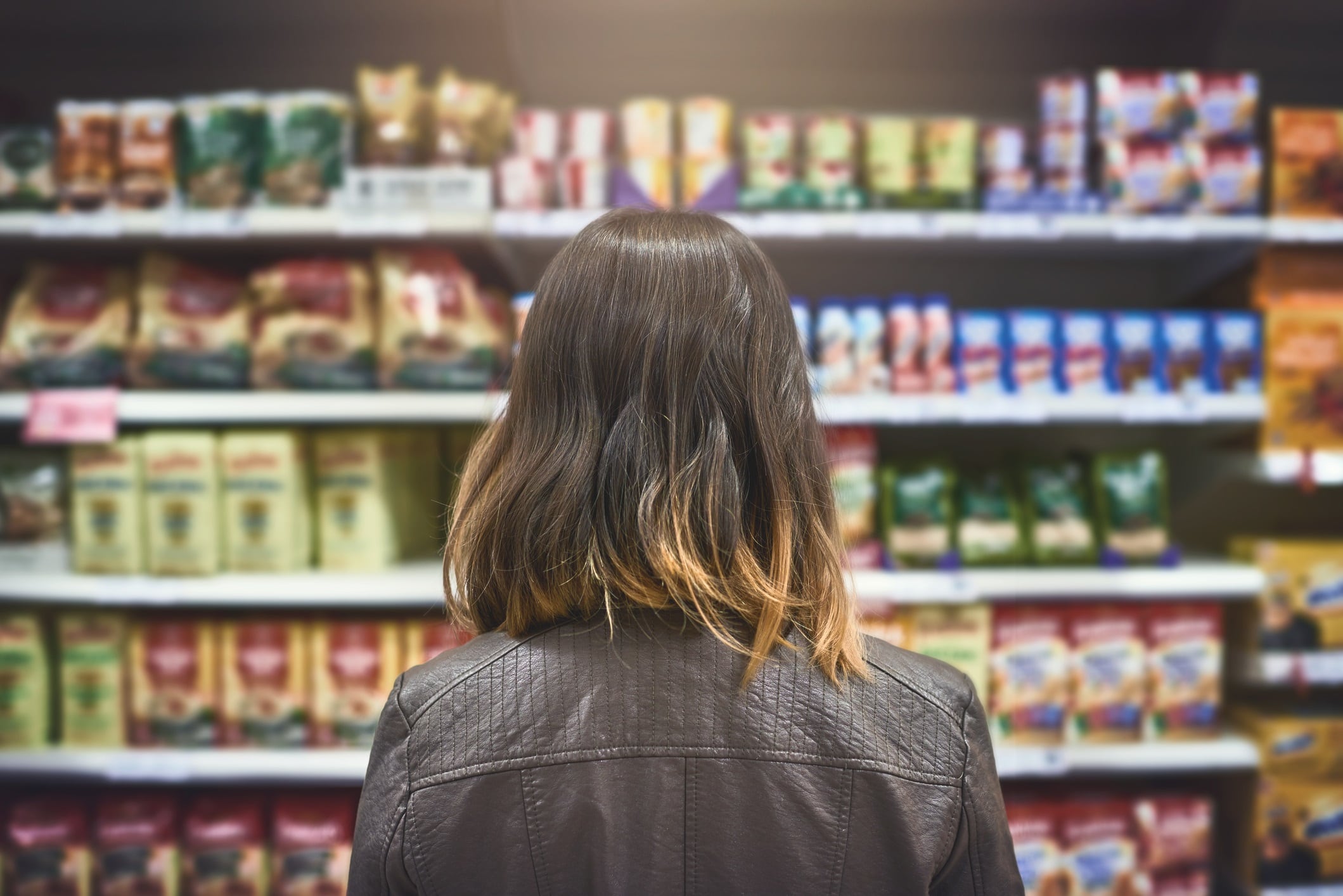The food and beverage retail sector is evolving at breakneck speed.
Shoppers are demanding more transparency, convenience, and sustainability, while digital innovation is reshaping how products are developed, marketed and sold.
On top of all that, climate pressures and supply chain disruptions are influencing availability and pricing, and geopolitical shifts are redefining sourcing strategies.
In this dynamic environment, consumer preferences are not just changing, they’re fragmenting and accelerating, forcing retailers to adapt faster than ever.
So, which trends are set to shape the industry in 2026?
Top food and beverage retail trends 2026
A new report, published by grocery insight specialists IGD (Institute of Grocery Distribution), reveals the trends shaping the future of food and beverage retail.
And while these trends might require action from retailers, analysts remain positive about the future of the industry, with Toby Pickard, retail futures senior partner at IGD stating: “retailers around the world are responding to shared challenges with bold, relevant solutions. These trends show how global forces are reshaping strategy, and why agility, relevance, and execution will define the leaders of tomorrow.”
Health and wellness
Health and wellness is no longer a niche, it’s a defining force in the evolution of food and beverage retail. Consumers are increasingly prioritising their physical and mental wellbeing, driven by heightened awareness of chronic disease prevention, immunity, and overall quality of life.
For retailers, this trend represents both a commercial opportunity and a strategic challenge. Health is not a one-size-fits-all proposition, it’s deeply personal, and influenced by factors such as age and lifestyle. This complexity, says IGD, means retailers must move beyond generic better-for-you claims and instead curate tailored health missions - from plant-based and protein-rich options to gut health, mental wellness, and clean-label transparency.
Actions for industry:
- Product assortment: Needs to reflect diverse health goals, integrating functional ingredients, fortified snacks, and low-sugar alternatives
- In-store and digital experiences: Must evolve to guide shoppers through the available options, leveraging education, personalisation, and trust-building
- Brand partnerships and innovation pipelines: Increase focus on science-backed benefits and credible certifications.

Convenience
Convenience is becoming a cornerstone of modern food and beverage retail, redefining how and where consumers access products. Historically, convenience retail thrived on flexibility and responsiveness - today it’s entering a transformative phase marked by two distinct trajectories.
On one side, local small supermarkets, like Sainsbury’s Local and Little Waitrose, continue to serve communities with ‘top-up’ products. These, says IGD, will remain vital to shoppers.
On the other side, specialist convenience operators, including 7-Eleven and Co-op are accelerating towards an immediate consumption model. This evolution is driven by consumer demand for speed, portability, and ready-to-eat solutions that fit increasingly mobile lifestyles. These operators are reshaping store formats, expanding hot and cold food ranges, and integrating digital ordering and frictionless payment systems to deliver on-the-go calories with minimal effort.
Implications for industry:
- Format innovation is intensifying, blending foodservice and retail to create hybrid spaces optimised for quick stops and impulse purchases
- Assortment strategies are increasingly prioritising fresh, high-quality, and health-conscious options alongside indulgent treats, catering to diverse diets from functional snacking to premium coffee experiences
- Technology integration such as click-and-collect, delivery partnerships, and AI-driven personalisation will become essential to meet expectations for speed and convenience beyond the physical store.

Global flavours
Global flavours are rapidly becoming a defining force in food and beverage retail, reshaping consumer expectations and driving innovation across categories. Immigration, international travel, and the pervasive influence of social media have created a world where culinary boundaries are dissolving. Today’s consumers - particularly younger generations - are exposed to global cuisines and cross-cultural experiences at unprecedented speed, fuelling a desire for diversity in their food choices.
This trend is not just about curiosity, it reflects deeper lifestyle shifts. Food has become a cultural connector and a form of self-expression, with shoppers seeking products that reflect their values, identities, and aspirations. Retailers who fail to meet these expectations risk losing relevance in an increasingly multicultural and digitally connected marketplace.
While many retailers have introduced world food aisles, these often fall short of delivering the breadth, depth, and authenticity consumers crave. The future demands a more integrated approach.
Actions for industry:
- Mainstream global flavours: Integrate into core assortments rather than isolating them in niche sections
- Authenticity and provenance: Partnerships with credible brands and suppliers will become essential to ensure authentic taste experiences
- Innovation in ready-to-eat and foodservice formats: Bringing global street food and fusion concepts into convenience and quick-service channels will create new sales opportunities
- Digital engagement and storytelling: Leveraging social platforms and influencer partnerships will help to showcase cultural narratives behind products.

AI revolution
Artificial Intelligence (AI) is rapidly becoming the invisible engine powering the next era of food and beverage retail. What began as a tool for operational efficiency is now a strategic enabler, transforming every layer of the retail ecosystem, from supply chain to customer engagement.
Implications for industry:
- Operational optimisation: AI-driven inventory management and predictive analytics are reducing waste, improving demand forecasting, and ensuring the right products are available at the right time. This not only cuts costs but also enhances sustainability by minimising overstock and spoilage
- Personalised experiences: Through advanced data modelling, AI enables hyper-personalised marketing, tailored promotions, and curated product recommendations - both online and in-store. This level of customisation strengthens loyalty and drives conversion rates
- Workflow automation: From head office planning to store-level execution, AI streamlines repetitive tasks, freeing up human resources for higher-value activities like customer service and innovation
- Strategic insights: AI transforms raw data into actionable intelligence, empowering retailers to make faster, smarter decisions on pricing, assortment, and store layouts.

Cybersecurity
Consumer trust was severely shaken in 2025, when two of the biggest food retailers in the UK - Marks & Spencer and Co-Op were hacked. The breaches resulted in supply chain and website issues, leaving shelves empty and online shopping suspended. But more importantly, customer information was stolen, leading to a major loss of trust in the industry’s ability to protect consumers.
As a result of these and other attacks, cybersecurity is emerging as a critical pillar of resilience for food and beverage retail.
Escalating ransomware attacks, phishing schemes, and large-scale data breaches have exposed the sector’s vulnerability, forcing retailers and suppliers to treat cybersecurity not as an IT issue, but as a strategic business imperative.
The industry’s growing reliance on integrated supply chains, automated ordering systems, and digital customer engagement amplifies the risk. A single breach can trigger cascading disruptions - halting operations, compromising sensitive data, eroding consumer trust, and creating costly legal liabilities. In an environment where margins are tight and reputations fragile, the stakes could not be higher.
Leading operators are moving beyond basic compliance to embed advanced threat detection, encrypted supply chain systems, and rapid incident response capabilities into their core infrastructure.
Actions for industry:
- Zero-trust architectures: Put in place to prevent unauthorised access across networks
- AI-driven monitoring: Created to identify anomalies and neutralise threats in real time
- Employee training: Human error remains a major vulnerability across all industries
- Vendor risk management: Ensure third-party partners meet stringent security standards.

The future of food and beverage retail
The food and beverage retail sector is entering an era of unprecedented complexity and opportunity. Health and wellness, convenience, global flavours, AI-driven innovation, and cybersecurity resilience are no longer optional, they’re strategic imperatives.
Each trend reflects a deeper shift in consumer expectations and operational realities, demanding agility, creativity, and investment from retailers.
Those who succeed will be the ones who embrace change as a constant, leverage technology to stay ahead, and deliver experiences that resonate with diverse, digitally connected shoppers. In a market where disruption is the norm, the ability to anticipate and adapt will define the leaders of 2026 and beyond.





